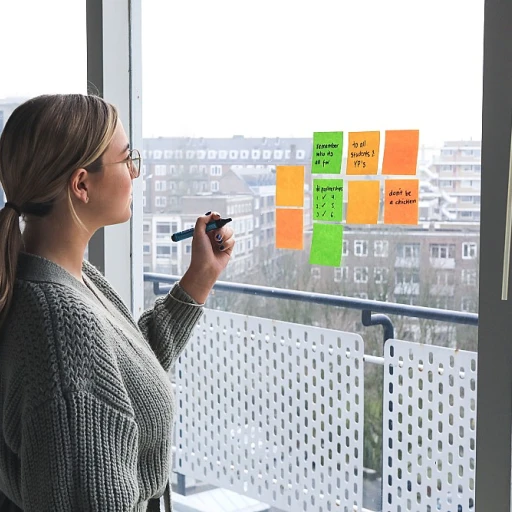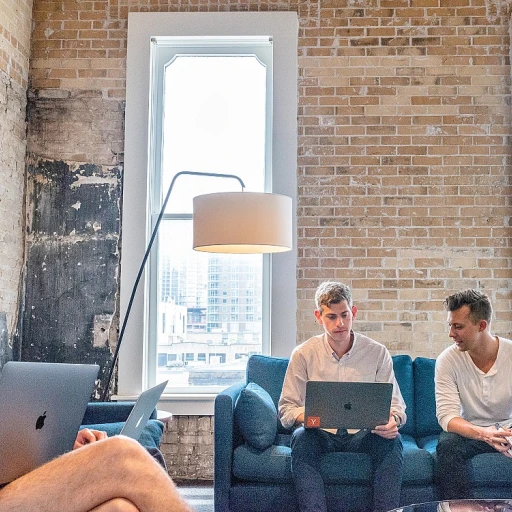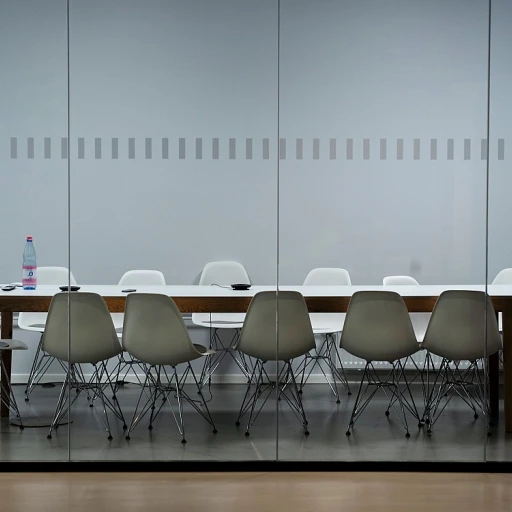Understanding the Role of a Conference Room in Indian Offices
The Vital Role of Conference Rooms in Indian Offices
In the dynamic landscape of Indian offices, conference rooms have become pivotal environments for collaboration and brainstorming. With high-paced advancements in technology and a steady shift toward modern office culture, understanding the impact of an optimized conference room cannot be understated. These spaces are no longer just venues for meetings but serve as catalysts for innovation and ideas, ensuring that teams can communicate effectively and problem-solve efficiently.
Conference rooms in India carry unique considerations compared to those in other parts of the world like the United States. The design, layout, and amenities must cater to the specific needs of their users, which often include accommodating diverse languages such as English and Francais, and cultural nuances. The layout must consider the number of attendees, providing adequate space for free and open movement, and an arrangement that supports both large gatherings and smaller, more intimate meetings. A room table is crucial, as is the choice of chairs, ensuring comfort during long discussions.
Moreover, these spaces are integral to the image and functioning of an enterprise. Office conference rooms should not only reflect the company's brand through room design and aesthetics but also provide the necessary technological support for cutting-edge presentations and collaborative sessions. Integrating features that support digital content exploration and easy access to online conferencing tools is vital for modern offices.
Importantly, workplace efficiency can be significantly enhanced by optimizing these rooms for their purpose. Strategies for maximizing space can be explored further in discussions about adapting these rooms for future needs. For example, design meeting rooms with flexibility in mind, allowing for reconfiguration as team dynamics evolve over time.
To delve deeper into enhancing office productivity and efficiency, a detailed examination of tools like a credit application progress tracker can provide insights into streamlined operations. Balancing the traditional room layout with modern needs ensures an environment where ideas flourish, and professional endeavors thrive.
Key Elements of an Efficient Conference Room
Essential Features for a Productive Space
In modern offices, the meeting room or office conference setting often becomes the hub for collaborative sessions and decision-making processes. To create an environment conducive to productivity, several key elements should be considered.- Room Layout and Design:
- Furniture Selection:
- Acoustic Optimization:
- Lighting and Atmosphere:
Cultural Considerations in Conference Room Design
Cultural Nuances in Meeting Spaces
Understanding cultural preferences is essential in designing a conference room that aligns with the values and expectations of its users. In India, where diverse cultural practices coexist, office managers must consider several factors. Knowing how attendees perceive meetings and interactions can significantly enhance workplace dynamics.- Seating Arrangements: The arrangement of chairs around the table conference often reflects hierarchy and respect. Ensuring that the seating layout accommodates these values can facilitate smoother interactions during meetings.
- Language Accommodations: Multi-lingual capabilities in meeting rooms can be crucial. Incorporating bilingual resources or virtual translation software may support both English and francais speaking attendees.
- Room Accessibility: Inclusive design considers access for all members, including those with mobility challenges. Office managers should ensure that meeting rooms are free from obstructions and offer easy access.
- Visual and Aesthetic Preferences: The use of culturally resonant images or photos within the room design can create a space that feels familiar and inviting to various demographic groups.
- Collaborative Atmosphere: Encouraging a collaborative environment can often require an open space for less formal discussions. Integrating flexible seating can help adapt the room for different meeting styles.
Technology Integration for Modern Conference Rooms
Integrating Advanced Technology for Modern Conference Rooms
In today's fast-paced corporate landscape, particularly in Indian offices, technology integration is pivotal in creating modern and functional conference rooms. A well-equipped conference room not only enhances productivity but also fosters collaboration among its users. The quintessential modern conference room needs to include cutting-edge communication tools. These tools ensure that virtual meeting participants from different regions, including the United States, can join seamlessly without interrupting the flow of the conference. Whether your team prefers using English, Francais, or other languages, having multilingual translation features can facilitate more inclusive and effective communication. Moreover, incorporating high-quality video conferencing systems with optimized room photos and images can significantly improve the meeting experience. Clear audio and sharp visuals are crucial when discussing important content or making presentations. Equally, ensure that your meeting room has robust internet access and dynamic room design layout for flexibility in hosting various types of sessions, be it a standard meeting or collaborative sessions. The design of the room table and chair setup should support an innovative and free-flowing exchange of ideas. With an open space design meeting environment, users can easily move and interact without feeling constrained. Remember, the comfort of the participants directly impacts the meeting's success, so don't skip content that addresses ergonomic comfort. Finally, considering the technological advances we've witnessed recently, it's beneficial to assess room design frequently. This approach ensures your office conference rooms remain adaptable and ready for any future needs that arise. Efficient technology integration combined with thoughtful design contributes to an effective conference room that meets the demands of modern office environments. These rooms are a best fit for modern offices aiming to optimize their meeting spaces and offer exemplary support to all attendees.Sustainability and Conference Room Design
Embracing Sustainable Practices in Conference Room Design
In the evolving landscape of office design, sustainability has become a pivotal consideration, especially in conference rooms. As Indian companies strive to align with global environmental standards, integrating eco-friendly elements into conference room design is not just a trend but a necessity.
One of the key aspects of sustainable conference room design is the choice of materials. Opt for furniture like chairs and tables made from recycled or sustainably sourced materials. This not only reduces the carbon footprint but also supports ethical practices in manufacturing.
Energy efficiency is another critical factor. Implementing LED lighting and energy-efficient HVAC systems can significantly reduce energy consumption. Additionally, utilizing natural light through strategic window placement can enhance the room's ambiance while cutting down on electricity usage.
Water conservation is often overlooked in office spaces. Installing low-flow fixtures in adjacent restrooms and promoting water-saving practices can contribute to overall sustainability efforts.
Designing for sustainability also involves creating a flexible layout that can adapt to various meeting types. This includes movable room tables and chairs that can be rearranged for different configurations, supporting both collaborative sessions and formal meetings. Such adaptability ensures the room remains relevant as office needs evolve.
Moreover, incorporating plants into the room design not only improves air quality but also enhances the aesthetic appeal. This biophilic approach can boost employee well-being and productivity during meetings.
By prioritizing sustainability in conference room design, Indian offices can contribute to a healthier planet while creating a space that supports efficient and effective meetings. This approach not only aligns with global standards but also sets a precedent for future office designs in the United States and beyond.
Adapting Conference Rooms for Future Needs
Crafting Future-Ready Conference Spaces
To ensure that your office conference rooms stay relevant, it's essential to adapt them to future needs. Indian companies are investing in more open, flexible, and efficient meeting spaces that can cater to diverse work styles and needs.- Flexible Layouts: Modern meeting rooms should offer adaptable layouts. This approach helps accommodate various seating arrangements like round tables for collaborative sessions or traditional setups for structured meetings. Using flexible furniture like mobile chairs and foldable tables can easily transform a room to best fit the meeting's purpose.
- Integrating Cutting-Edge Technology: As highlighted earlier, technology integration is crucial for efficiency and effectiveness. The future will lean heavily on advanced digital tools, making real-time collaboration more interactive and productive. High-quality video conferencing tools, intuitive digital whiteboards, and seamless screen-sharing capabilities are just some elements that Indian meeting rooms should embrace.
- Promoting Inclusivity and Accessibility: Ensure that the room design considers users with varied needs, ensuring free access and usability for everyone. By considering inclusivity and functionality, conference rooms can accommodate all team members, offering an optimal experience regardless of individual differences.
- Leveraging Design for Engagement: As companies begin embracing hybrid work models, the emphasis is on creating a space that users find engaging and comfortable. The design should also include elements that foster creativity and productive exchanges, making office conference rooms a desired space.
- Sustainable Practices: While technology and flexibility are vital, attention should be given to sustainability. Opt for eco-friendly materials and energy-efficient systems that reduce the environmental impact and promote a green ethos.











